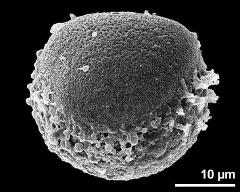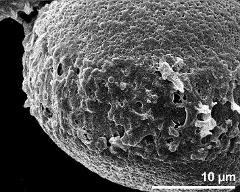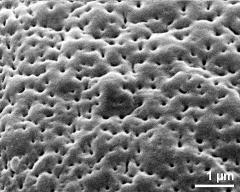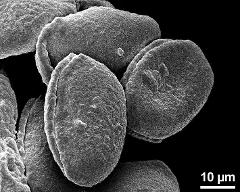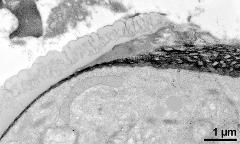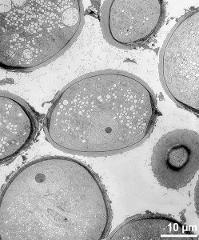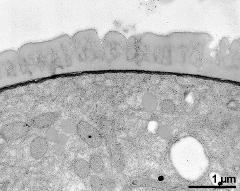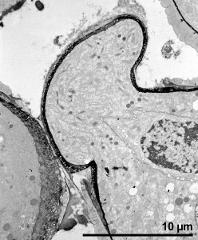Amydrium medium
Taxonomy: Spermatophyta, Arales, Araceae, Amydrium
Published: 2005-06-01
Pollen Description
Shape, Size and Aperture
pollen unit: monad, dispersal unit and peculiarities: monad, size (pollen unit): medium-sized (26-50 µm), size of hydrated pollen (LM): -, shortest polar axis in equatorial view (LM): -, longest polar axis in equatorial view (LM): -, shortest diameter in equatorial or polar view (LM): -, longest diameter in equatorial or polar view (LM): -, pollen class: -, polarity: isopolar, P/E-ratio: -, shape: spheroidal, outline in polar view: circular, dominant orientation (LM): -, P/E-ratio (dry pollen): oblate, shape (dry pollen): -, outline in polar view (dry pollen): elliptic, infoldings (dry pollen): aperture(s) sunken, aperture number: 1, aperture type: -, aperture condition: sulcate, aperture peculiarities: -
Ornamentation and Structure
LM ornamentation LM: -, nexine: -, sexine: -, SEM ornamentation SEM: perforate, suprasculpture SEM: -, TEM tectum: -, infratectum: granular, foot layer: continuous, endexine: compact-continuous, intine: -, wall peculiarities: -, supratectal element: -
Miscellaneous
pollen coatings: absent, reserves in cytoplasm: -, cell number: 2-celled, Ubisch bodies: present
Annotations: endexine extremely thin
Author(s) of diagnosis: Halbritter, H.; Weber, M.
Pictures
Picture legend
- slightly oblique polar view - fresh, rehydrated (water) & critical point dried & sputter coated with gold, photographer: Halbritter, H.
- detail of aperture - fresh, rehydrated (water) & critical point dried & sputter coated with gold, photographer: Halbritter, H.
- exine surface - fresh, rehydrated (water) & critical point dried & sputter coated with gold, photographer: Halbritter, H.
- dry pollen grains - dry, sputter coated with gold, photographer: Halbritter, H.
- transition of aperture and interapertural zone (left), glutaraldehyde & osmium & potassium ferrocyanide, uranyl acetate & lead citrate, photographer: Weber, M.
- hydrated pollen grains, glutaraldehyde & osmium & potassium ferrocyanide, uranyl acetate & lead citrate, photographer: Weber, M.
- pollen wall, glutaraldehyde & osmium & potassium ferrocyanide, uranyl acetate & lead citrate, photographer: Weber, M.
- germinating pollen grain (aperture), glutaraldehyde & osmium & potassium ferrocyanide, uranyl acetate & lead citrate, photographer: Weber, M.
Literature
Copyright and Citation
Cite this publication as:
Halbritter H., Weber M. 2005. Amydrium medium. In: PalDat - A palynological database. https://www.paldat.org/pub/Amydrium_medium/100501;jsessionid=4C8D74044F5D34A80F95FE65A9AA481F; accessed 2024-04-25

